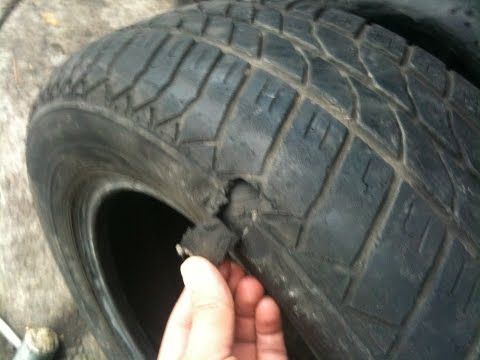When is someone going to invent tires that don’t suffer from wear and tear?
They play a crucial part in how much control you have over your car. Unfortunately, there is a collection of complications that can affect them. One of the most insidious of these is dry rot. You may recognize this more as yours start to crack.
In this article, we list the causes, symptoms and preventative measures against dry rot, and how to fix cracked tires.
Below you will find out when the symptoms are too advanced and a tire needs replacing, and when a repair is possible. If it hasn’t escalated too far, we advise on how to fix them internally and externally.
Those of you who want to go to a professional will learn what to anticipate.
And perhaps most importantly, this article will tell you when it’s safe to drive with cracked tires and when it isn’t.
Contents (Jump to Topic)
 2 How to Fix Cracked Tires Externally Using Protectant
2 How to Fix Cracked Tires Externally Using ProtectantDon’t confuse the dry rot we discuss here with the fungal disease that targets plants and wood. Thankfully, tires aren’t susceptible to this kind of problem. If they were, those of you who live in coastal areas would be buying a new set every few months.
The name comes from the appearance of the unit as it degrades, which can resemble real dry rot. It’s the breakdown of the materials over time.
Various materials go into producing modern tires. Besides natural and synthetic rubber compounds, there are also property-boosting additives. For instance, black carbon is used for reinforcement.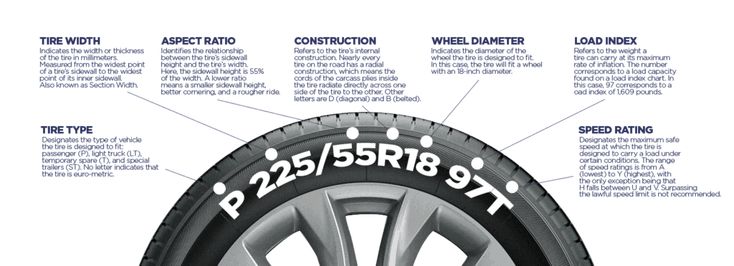 Protective waxes and oils are applied during the final stages of the process.
Protective waxes and oils are applied during the final stages of the process.
Very little of an average tire is made of pure, natural rubber. Not only would that lead to high costs, but synthetics tend to be more durable.
Still, they aren’t invincible: whoever invents an everlasting tire would make a fortune. They’re susceptible to degeneration like everything else in your car. This manifests over time with distinct physical symptoms, which we cover below.
The early signs below don’t happen instantaneously. It takes time for the degradation to start to appear. They could be rotting right now, and you won’t be able to tell by inspecting them.
This is one of the many reasons why preventative care is beneficial: stopping dry rot while it’s still in the invisible stage.
Look out for the following three indicators:
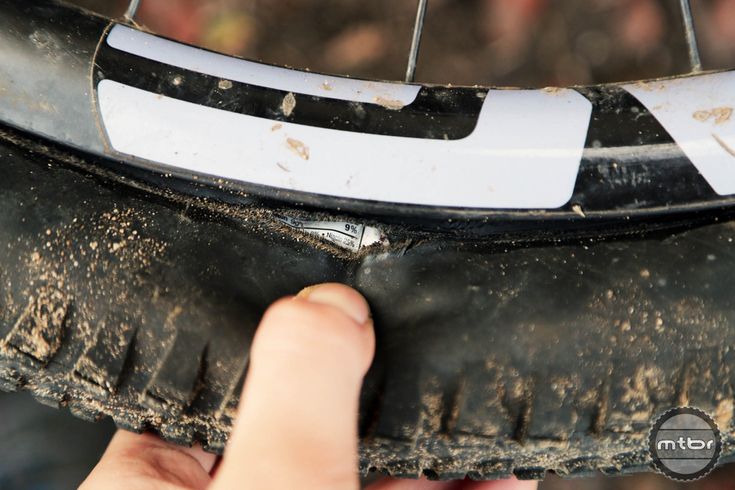
Cracks appearing on your sidewall are a telltale warning of early-stage dry rot. You may see a few in one area, or they may have fully surrounded your hubcap.
Healthy rubber is flexible; that’s what makes it ideal for driving on. It compensates for changes in the road and the shifting weight of your vehicle.
When dry rot takes hold, the protective waxes and oils we talked about earlier will start to wear away. As a result, they’ll look dried out or feel brittle to the touch.
Small pieces flake off around heavily affected areas. Think of mildly dehydrated skin.
Numerous factors provoke cracking, such as:
Temperatures at either extreme aren’t good for rubber.![]() At freezing or below, the material is prone to turning rigid as it dries out.
At freezing or below, the material is prone to turning rigid as it dries out.
During boiling hot summers they can suffer from heat-fatigue. Strong UV light speeds up or triggers dry rot.
The rays of the sun fade, crack and break down the chemical bonds in rubber compounds. Waxes and oils gradually evaporate, leaving them even more vulnerable.
Leaving your vehicle parked for months on end won’t preserve your tires. On the contrary, long-term disuse is a direct cause of dry rot.
When the tire isn’t moving, useful compounds such as antioxidants and oils aren’t being distributed. Instead, they either evaporate or leech into the concrete.
When your mechanic emphasizes following up with maintenance, it’s not a gimmick. Regular services are vital to keeping your car running safely and smoothly. Neglecting your tires is a sure-fire way to amplify your chances of seeing cracks.
Financial limitations make it difficult to pay the price for OEM units.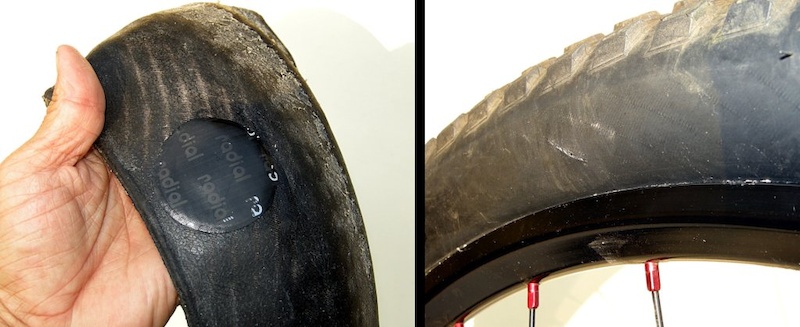 You may have to settle for a less costly model or set. If that’s the case, take care when you’re shopping. You can conserve your money without having to sacrifice on quality.
You may have to settle for a less costly model or set. If that’s the case, take care when you’re shopping. You can conserve your money without having to sacrifice on quality.
Be wary of online distributors selling units that are dramatically cheaper than reputable businesses. Your purchase may look perfect on the outside, but be poorly built.
Cracking signals that they’ve been on your vehicle for too long. Thousands of miles and years of exposure to the elements are inevitable causes of aging.
Ozone is fine way up in the earth’s atmosphere, but not so great for tires. At ground level, it’s a pollutant.
Aerosol sprays and electrical appliances produce ozone. Air purifiers or laundry water treatment systems that you may keep in your garage where your vehicle is emit it.
Apart from ozone being a respiratory hazard and unhealthy for plants, it also negatively impacts inanimate objects. This includes fabrics, wires, and rubber.
As discussed, many variables determine when (and if) dry rot strikes. The older the unit gets, the more likely it is to start to degrade.
A carelessly maintained tire that’s two years old could look worse than one that’s four years old but well looked after.
The same will likely apply if the newer model is subject to any of the conditions we described above.
Is it safe to keep driving with cracked tires, and if so, for how long?
Dry rot isn’t necessarily always an urgent matter, but it can be. Before you continue rolling with your current tires, you should know about these effects:
Steering systems and differentials don’t count for much if your tires are failing. Cracking is a sign of failure.
Cracking is a sign of failure.
As the damage progresses, it will jeopardize the integrity of the unit. If large sections of the unit are affected, it won’t handle as well.
Tires are subject to immense pressure while your car is in motion. They also get hotter the longer you drive, and the faster you go.
Cracks are weak spots that won’t hold up well to the strain. Particularly if cracks are in the treads, running over a sharp object could cause a puncture.
The worst outcome would be a blow-out. This may be the result of a puncture or one or more cracks tearing open under stress.
Understand that any problem with your tires raises your accident risk. Adding to that unsettling statistic, more cars with these issues rolled over than not.
Insisting to drive on severely rotted units can endanger other road users, not just you and your passengers.
Large portions of the unit can begin to rot and separate. If a large piece falls off, it could end with an explosive blow-out. That big chunk of rubber in the road will then pose a risk to anyone driving behind you.
And it isn’t easy to remove debris like that from busy roads like highways or in city centers. You don’t want to be liable for other individuals getting hurt.
After the last section, you’re probably expecting a resounding, “no.” But, if you catch the dry rot at the early stages and repair it, you should be in the clear. Afterward, it should be safe to continue driving on it.
This is assuming there aren’t any other problems. If you’ve had it on your vehicle for too long or the treads are worn flat, dry rot is the least of your worries.
Driving with moderate to advanced dry rot means gambling with all the consequences mentioned above.
Before you go any further, inspect them first. It could be that the dry rot is beyond the point of fixing.
It could be that the dry rot is beyond the point of fixing.
Be sure to rotate your wheels as you examine them, or have an assistant do so. Hopefully, the cracking isn’t too serious yet.
We don’t advise attempting to conduct a repair if you notice:
A few hair-thin cracks aren’t alarming. If they’re deep, thick or widespread, resign that unit to be recycled.
It doesn’t matter that your sidewalls aren’t in direct contact with the road. These badly-rotted areas can break apart from heat and pressure.
Carbon contributes to a tire’s durability. It significantly lowers the effects of abrasion and overall wear.
Areas that are fading or discolored are losing this compound, which doesn’t bode well for resilience.
How well your car grips the road (traction) and its stopping power are related to the state of your treads. Cracks will decrease these abilities, meaning driving will be a lot more dangerous.
Cracks will decrease these abilities, meaning driving will be a lot more dangerous.
If you can barely see the tread pattern anymore, the units are bare—from age or hard use. There’s no miracle product or solution to restore them.
A little bit of flaking rubber due to brittleness is acceptable if it’s just a small amount. If any floppy sections are hanging off, it’s finished.
We suggest performing both internal and external repairs for maximum effectiveness. Using just one method won’t be as successful.
Remember to check them periodically; at least once a month. If dry rot reappears, replacement might be your only option.
Sealants are substances that are applied internally. These are used as a preventative or in the event of a flat.
Choose one that specifically mentions cracks or dry rot. Stop-flat varieties aren’t appropriate and won’t do any good.
Make sure the brand you buy is suitable for your tires. For instance, some are for larger vehicles, whereas others are only suited for lightweight ones.
Equipment needed:
Never used one of these products? Don’t worry; there’s nothing difficult about the process. This is all you need to do:
If you’ve recently driven it, give the whole vehicle time to cool off. The tire you’re treating should feel cold to the touch.
Your product may have come as a kit with a hose. If it’s in a can, you might have to agitate it before using it.
Get the sealant ready as specified by the manufacturer guidelines.
Unscrew the stem valve cap and put it aside.
Insert the injector or nozzle into the valve stem. Squeeze or spray in the directed amount of sealant.
You likely lost some air pressure while you performed the treatment. Reinflate as needed, checking the PSI with your pressure gauge. Close the stem valve with the cap.
Take your car out for a ride so that the product coats the whole inside of the tire. This might not be required for some sealants.
A protectant is the external version of a sealant. These coatings rejuvenate the rubber as well as shield against threats like UV light.
Choose a water-based brand over a solvent-based one. Solvents are volatile agents, meaning they can be toxic if handled.
Equipment Needed:
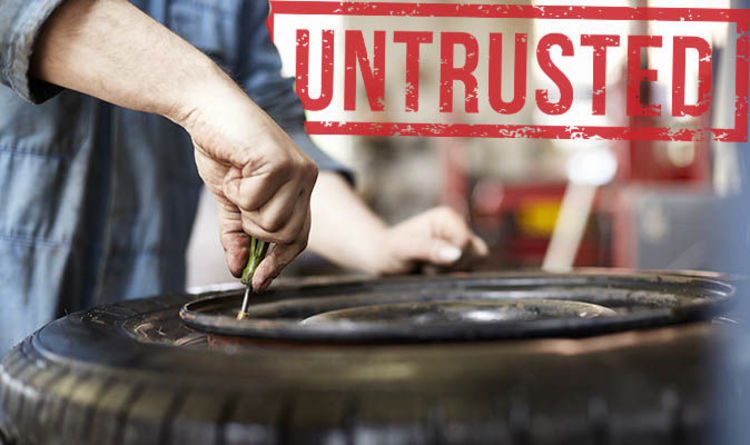
We’ll be honest: this fix is going to take more time than the internal method. Set aside an hour or two and work through these steps:
This is going to be a messy job. Imagine how filthy your tires are after rolling on the road for thousands of miles.
You need a flat area to work where your drain pan won’t be at an angle.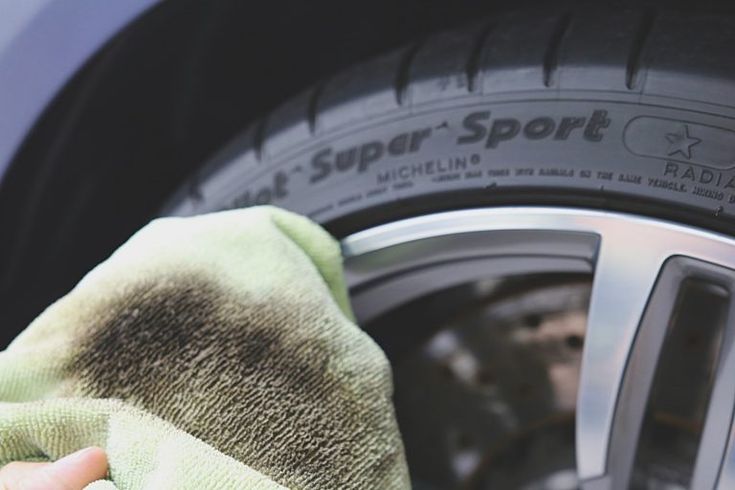 You don’t want runoff to pollute the environment or stains on or near your property.
You don’t want runoff to pollute the environment or stains on or near your property.
Wait until none of the tires are warm or hot to the touch. If you haven’t been driving, start straight away.
Jack your car up and place your jack stands to keep it secure. Put your gloves on to be able to handle your tires.
A thorough cleaning is impossible while they’re still attached to your rims. Remove each one that’s showing early symptoms of dry rot. Prop them up and set them to the side.
Place the first tire into the drain pan.
Apply your tire degreaser as instructed on the label. You may have to spray it on or use a
sponge to apply it.
Make sure the product gets into all areas. A layer of dirt will interfere with the protectant, so make sure they are clean first.
Give the degreaser a few minutes to take action. Then, start scrubbing with your sponge.
Pay special attention to the areas that are beginning to show cracks. Take your time to
loosen stubborn road grime.
Set your hose to low pressure so that you don’t blast degreaser and filth everywhere. Gently rinse the entire surface of the tire, using a few rags for assistance.
Don’t stop rinsing until the rags are coming back clean. You may have to lift it out of the drain pan to reach the entire surface area.
Depending on the drain pan’s size, you may need to empty it. Transfer the contaminated water into your containers.
With fresh rags, wipe it down and set it on the ground to air-dry.
Pour any remaining dirty water into your containers to be disposed of later. Wipe the
pan down or rinse it out.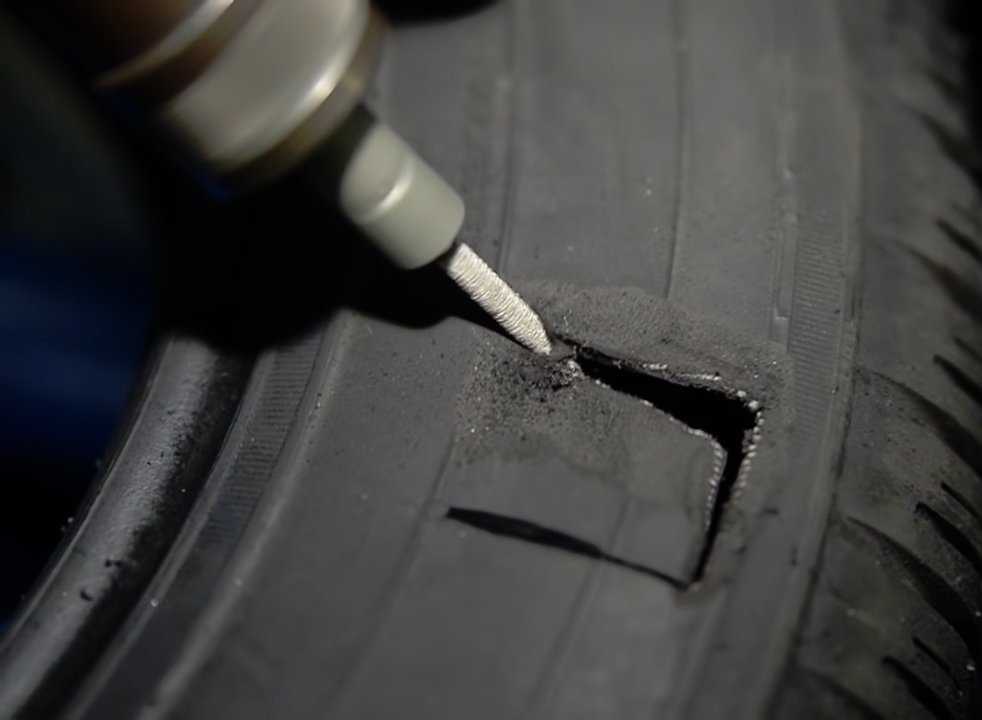
Spray or wipe on your protectant all over the tire surface as instructed. Distribute it all over the tire, not just on the cracked areas.
Once the protectant has cured, put the tire back onto your car.
Repeat the above steps with all the cracked tires.
Your mechanic will likely err on the side of caution and suggest a replacement. A detailing shop may agree to use protectant if the units aren’t too far gone.
This will probably be as part of a package (e.g., buffing, polishing, etc.). Not many businesses will agree to detail your tires alone as it isn’t worth their time.
There’s no way around it: any aging rubber will become prone to cracking. You can’t shield your units from this fate, but you can lessen the chances of dry rot with our tips:

Schedule services within intervals suggested by your vehicle’s manufacturer. Rotations are usually every 5,000 to 8,000 miles; pressure checks should be done once a month.
Have your mechanic examine each tire for damage every year. Or, do it yourself if you know what to look for. This includes bulging, irregular wear, physical damage, and odd noises.
Do you have a vehicle that you rarely use? Make a point not to let it sit on the tires for months without movement. Drive it once or twice per month helps to keep them in good shape.
If this isn’t possible, prepare your vehicle for long-term storage. Remove the tires, wrap them up, and set your car on jack stands.
Harsh weather is hard on your vehicle all over. Try to park indoors whenever you have the opportunity.
Try to park indoors whenever you have the opportunity.
If your car sits outside for unused for days or weeks on end, buy a car cover. Get one that’s large enough to cover your wheels too.
Appliances in your garage could be emitting ozone. If you find any, it’s best to remove them from the vicinity.
Knowing how to fix cracked tires is handy. Now that you know what signs and symptoms to watch for, you can catch early onset cracking early. Hopefully, you’ll be able to delay costly replacements.
The main takeaway here is that prevention will always be the better choice. It takes little effort to follow good maintenance practices. Parking indoors or using a car cover won’t take more than a couple of extra minutes a day.
Do you have questions for us about dry rot or any experience of it? Let us know in the comments section; we’re looking forward to hearing from you!
The sight of cracked tires can ruin your day.
It’s a condition that affects your car’s movement and general safety if left unfixed. Unfortunately, cracked tires are inevitable. As your car begins to age and the tires are exposed to extreme temperatures, they start to show cracks.
To avoid putting your safety in jeopardy, it’s imperative to learn how to fix cracked tires. In this article, you’ll learn to identify cracks, their causes, how they are fixed, and how you can prevent them.
Table of Contents
It’s fairly easy to notice cracked tires. The following are signs that appear when there are cracks on your vehicle’s tires:
The rubber parts of tires are protected by oils and antioxidants. Frequent usage can make these protective compounds wear away. This makes your tires appear dry and brittle when felt.
Ever noticed splits and cracks on the sidewalls of your tires? They can appear on both sides and are the clearest sign that you have cracked tires.
Cracks can also appear on your tire tread’s outer edges. This is usually caused by dry rot at an advanced stage. The cracks might look small, but they can compromise your car’s handling even when the tread still has enough depth.
When your car tire’s black color begins to turn grey, there’s a chance it’s due to dry rot. Sometimes, the color starts fading before cracking happens. However, they can both happen at the same time as well.
Dry rot doesn’t happen overnight. It’s caused by several reasons including:
Storing your car in a garage and leaving it unused for a long period can leave the engine in a bad condition. But it can also suffer further damage due to dry rot. As earlier mentioned, tires are protected by oils and antioxidants.
When left unused, these protective compounds can evaporate or leach into the ground..jpg) This effectively removes your car’s protective layer, making it vulnerable to cracking
This effectively removes your car’s protective layer, making it vulnerable to cracking
Like humans, cars age with time. The older they get, the less efficient their parts become. This is also true for car tires. After a while, the rubber begins to age, and dry rot sets in. The aging process can also be accelerated by heavy use.
With your tires running for many miles every day and being exposed to various elements, it will start to crack.
Extreme temperature and humidity are some of the elements that can cause your tires to deteriorate. While this process is gradual under normal conditions, it accelerates when the temperature is particularly high.
When the temperature is low, the rubber becomes rigid as it dries out. This allows dry rot to set in faster. Similarly, when the temperature is high, sunlight breaks down the rubber’s protective compounds causing tires to crack rapidly.
If your tires are made with low-quality materials, you can bet on dry rot to set in easily. Tires face different elements as well as static friction between them and the road. If the rubber and other components are substandard, the cracking process will happen much faster causing your tires to deteriorate at an alarming speed.
Tires face different elements as well as static friction between them and the road. If the rubber and other components are substandard, the cracking process will happen much faster causing your tires to deteriorate at an alarming speed.
It’s crucial to get your car’s pressure right to avoid the effects of under or over-pressurized tires. One such effect is dry rot. When the tires are over-pressurized, there’s additional stress on the walls which may lead to bulging and eventually cause cracks. On the other hand, under-pressurized tires experience more friction with the road. This causes dry rot.
See Also – Tire Pressure Sensor Fault (Causes and How to Fix)
When dry rot sets in, you have the option to change your tires. But If you’re not too thrilled with the idea of replacing your tires every year, it’s best to learn how to fix them. Below are steps to fix your cracked tires.
You can fix your cracked tires with sealants when the cracks are small and not obvious. To ensure this method is done right, you need to buy a sealant that’s suitable for your tires.
Here are the tools you need:
● Dry rot sealant that suits your tires
● Tire inflator
● Tire pressure gauge
● 1/2” Socket wrench or Lug wrench
Follow the steps below to fix your tires with a sealant:
As you may have noticed, your vehicle naturally heats up when driven. For tires, the heating up is a result of the friction between them and the ground. If you’ve recently driven your car, allow it to cool down before you fix the cracks with a sealant.
The next step is to jack up your vehicle and remove the affected tires. You can’t fix tires properly if they are not attached to your car. Therefore, you’ll need the lug wrench or the 1/2” socket wrench to take off your tires to allow you to fix them properly.
The level of damage will confirm if your tires are fixable or they need to be replaced. This inspection also allows you to see the area that’s damaged. With a clear idea of the situation, you can come up with a good plan to fix the tires.
Depending on the kind of sealant, you might need to prepare it according to the instructions. However, some sealants don’t need any special preparation. You can apply them right away. To apply the sealant on the insides of your tires, insert the injector into the valve stem.
With the sealant applied, your tires may have lost some air. Therefore, you need to re-inflate them. Use the pressure gauge to ensure you get the pressure right.
With your tires fixed, re-install them on your car. Some sealants require you to drive your car around immediately after installing. This helps the sealant to circulate and seal the cracks adequately.
This helps the sealant to circulate and seal the cracks adequately.
For visible cracks, this method is ideal. A protectant can fix cracks and help protect the rubber from UV rays.
● Water hose
● Large sponge
● Water-based tire degreaser
● Tire protectant
Like the first method, you need to wait till your tires are cool before taking them out to examine. The inspection will show where the major problem is and if it’s fixable.
With the large sponge, apply the degreaser to your tires. Be sure to apply it to every area of the tires while focusing on the cracked areas. Scrub thoroughly to get the degreaser on the tire’s entire surface.
After applying the degreaser, allow your tires to dry.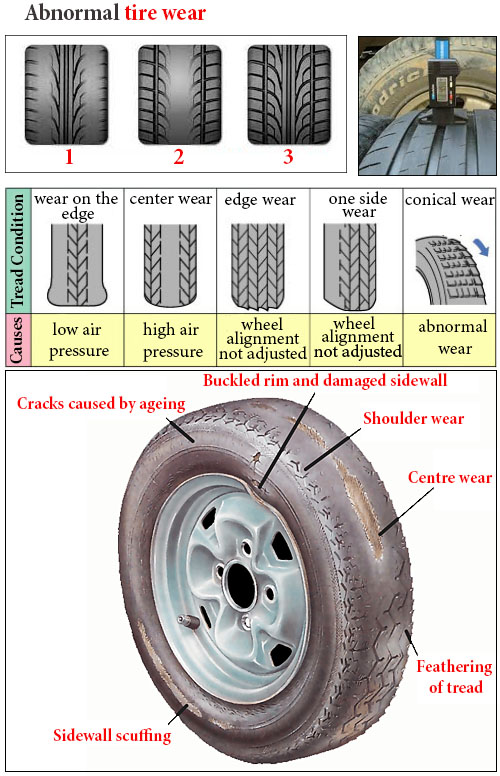 When dry, wipe down with a clean cloth and rinse with the water hose.
When dry, wipe down with a clean cloth and rinse with the water hose.
When the tires are dry from rinsing, apply the tire protectant. Following the instructions on the protectant, spray it across the tires’ entire surface.
When you’ve sprayed your tires, the cracks should be fixed. You can re-install your tires on your car. If you still see signs of dry rot, repeat the process for better results.
Your tires can’t stay new forever, but with the following measures, you can keep extending their lifespan and keep them from cracking too soon:
● Don’t buy low-quality tires
● Clean regularly
● Cover your car when parked outside
● Maintain ideal tire pressure
● Examine your tires regularly
● Apply protectants frequently
The average life of car tires is six years. After a few years, dry rot is bound to set in. But if you’re quick to fix them, you can easily extend your tire’s lifespan.
But if you’re quick to fix them, you can easily extend your tire’s lifespan.
See Also – What Are Radial Tires?
Tim Miller
Editor-in-Chief at GmundCars.com
Tim is a mechanic and car blogger from Denver, Colorado. He has over 10 years experience in car repair.
Latest posts by Tim Miller (see all)
Contents
When changing tires, car owners often face tire deformation. Cracks in rubber are a worthy reason to think about replacing or restoring it. Small cracks sometimes cover the entire radius of the wheel, but it is still possible to move around the city on it, especially if the tires are tubeless, but leaving the city limits is not recommended. Large cracks with delamination coming from the cord itself require special care. And if such a phenomenon as bedsores, what to treat should be determined by a medical specialist, then the “treatment” of car tires from cracks is the business of automobile “doctors”.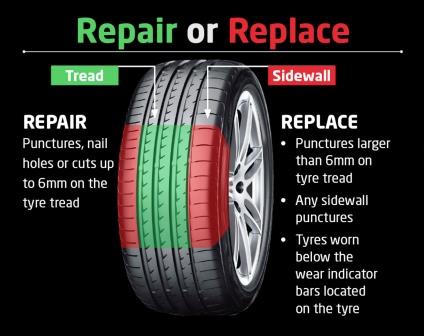
It is worth taking therapeutic and preventive measures for the rubber of your car in a specialized center. The method of restoring rubber is melting or welding. But here you need to consider two points that any motorist should know. Firstly, it is necessary to take into account the wear of rubber, because restoration - no matter how much we would like it, the pleasure is not cheap and sometimes simply does not justify itself. Secondly, when it comes to tires and, especially, brakes, savings are out of the question.
In addition to the rubber on the wheels, the rubber elements of the body kit and the seals of the trunk and doors can also crack. And if the most effective remedy for pressure sores, for example, "Proteox-TM" is a thin wound dressing with the main components intended for the treatment of various pressure sores, including those infected. That professional care product for rubber elements can be at least "Gummi - Pflege Stift", developed by Sonax and outwardly resembling a marker pencil. The tool is focused on restoring the elasticity of rubber, cleaning its surfaces from dirt and giving a characteristic shine. The tip of the pencil moves, actively introducing the so-called silicone component into the surface of the rubber coating, which forms a stable film that prevents cracking and aging of the rubber. Take care of your tires, have a marker pen in your glove compartment and may your road be successful!
And if the most effective remedy for pressure sores, for example, "Proteox-TM" is a thin wound dressing with the main components intended for the treatment of various pressure sores, including those infected. That professional care product for rubber elements can be at least "Gummi - Pflege Stift", developed by Sonax and outwardly resembling a marker pencil. The tool is focused on restoring the elasticity of rubber, cleaning its surfaces from dirt and giving a characteristic shine. The tip of the pencil moves, actively introducing the so-called silicone component into the surface of the rubber coating, which forms a stable film that prevents cracking and aging of the rubber. Take care of your tires, have a marker pen in your glove compartment and may your road be successful!
When noticing tire cracks, many vehicle owners ask themselves: “Is it time to change tires right away or can I drive a little more?” Experts recommend not to take risks and replace the rubber on which cracks have appeared in time.
Very small or deep cracks in the tire tread occur due to several reasons. The appearance of cracking on the surface of the rubber, outwardly resembling a cobweb, which has a depth of no more than 2 mm, is a sure sign of improper storage of tires. Most likely, the tire was exposed to ultraviolet rays for a long time or lay in a room where there were temperature fluctuations.
Small cracks in the grooves on the tire occur as a result of the impact on the wheel of chemical reagents that are part of the asphalt mixture, sand-salt compositions, which are sprinkled on roads in ice.
Cracks greater than 3 mm in depth are caused by tire wear from long-term use. The resins and oils used in the production of wheels gradually evaporate, and the rubber loses its elasticity.
Another reason that causes cracks in the tire tread pattern is inaccurate wheel beading. The cord can be damaged by an inexperienced craftsman involved in this procedure or poor-quality equipment used at some service stations.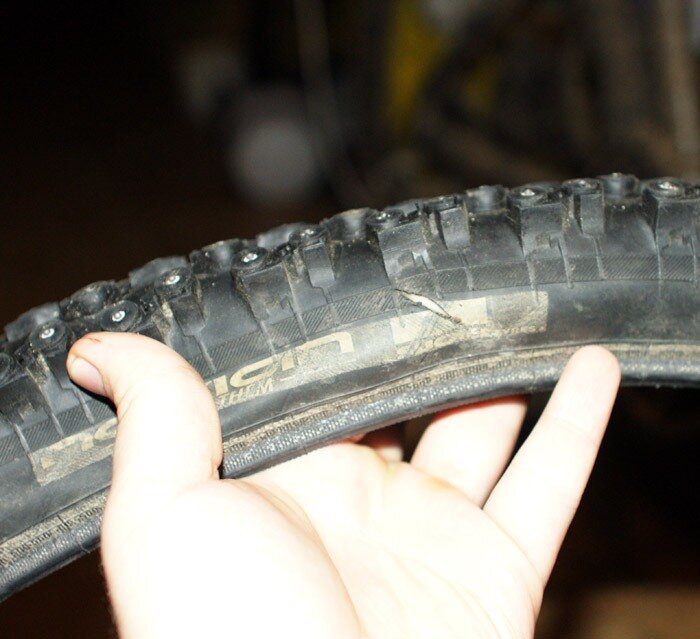
Small cracks on the surface of the tire - a cosmetic defect that does not pose a danger. But tires with deep longitudinal or transverse cracks can fail at any time. In order not to endanger the lives of the driver and passengers, they are recommended to be replaced.
The answer to the question of whether it is possible to drive with cracks on tires depends on the degree of tire damage. In the presence of small grooves, operation is allowed subject to certain conditions:
In case of deep cracks in the wheel, the tire must be replaced as soon as possible. Such damage is associated with the separation of the metal cord from the rubber coating. During the movement of the vehicle, dirt, moisture, and reagents that have been used to treat roads inevitably get inside the damaged tire. This leads to damage to the disc, and the tire may burst while driving.
This leads to damage to the disc, and the tire may burst while driving.
If there are only cobwebs of small cracks on the wheel, experts recommend treating the tire with a special silicone compound that slows down the aging of rubber.
If there are deep longitudinal or transverse damage, there is no question of how to repair cracks in the tires. In this case, the use of damaged rubber is strictly prohibited. You will need to replace the kit with a new one.
Another change season is approaching. And perhaps you remember that on one of the tires after the past winter / summer there is a jamb - a small bump. For the sake of one new tire, you don’t want to run to the store. We understand. Or maybe even better if repaired?
Yes, not every wheel that has met with a nail, rebar sticking out of the ground or a sharp stone on the road is considered damaged. Everything, of course, depends on the scale of the damage and its location on the tire itself. Some are easily repaired, while others are simply impossible to do - send the tire only to the trash.
Everything, of course, depends on the scale of the damage and its location on the tire itself. Some are easily repaired, while others are simply impossible to do - send the tire only to the trash.
A bulge on a wheel, referred to by drivers as a bump or bulge, is the most common tire sidewall defect. It appears due to a collision with an obstacle or after falling into a pit, more often at high speed. The threads of the sidewall carcass are easily damaged by impact, and the tire at this point can no longer hold the load and air pressure - swelling appears. A small bump sooner or later turns into a big one, and driving with such a defect is dangerous - the wheel can shoot at any moment. At high speed, this is fraught with loss of control, departure from the road and a coup.
Some types of hernias are repairable, although this is a temporary measure. No patch will be able to restore the factory rigidity. Ideally, change the tire.
Special cord patches can extend the life of a tire with a herniation, even if the swelling has appeared on the tread. The sidewall is a different story. If the swelling appeared at a distance of more than 40 mm from the side, it can be repaired. If not, then the wheel needs to be replaced. Blisters on low profile tires are most often non-repairable.
The sidewall is a different story. If the swelling appeared at a distance of more than 40 mm from the side, it can be repaired. If not, then the wheel needs to be replaced. Blisters on low profile tires are most often non-repairable.
For maximum safety when riding with a repaired bump, insert the tube. This is an inexpensive and reliable solution. On our market, you can find cameras made in China and Russia, the latter are a little more expensive, but also of better quality.
The elimination of a side cut is a serious operation, therefore, as in the case of a bump, you will have to go to the professionals. We need cord patches, fortunately in our time they are of different sizes and with a different number of layers. And if you do it wisely, then you can not do without special tools and vulcanization.
A cut, by the way, cannot be healed in all cases. If the gap is in the shoulder area of the tire, it is unlikely that anyone will undertake to repair it, since no guarantees can be given here. However, our Kulibins take on even the most difficult cases, cutting out parts of the sidewalls from the tires and even weaving the cord on their own.
However, our Kulibins take on even the most difficult cases, cutting out parts of the sidewalls from the tires and even weaving the cord on their own.
Low profile tires can be repaired but more difficult. A sidewall tear is easier to seal on medium or high profile tyres.
Sometimes a cut is confused with a pluck. This is when the outer layer of the sidewall caught on something sharp, a tear formed, but the frame itself remained intact. There is nothing wrong with this, although the drivers at the tire shop successfully repair the cut, for which they take it, respectively.
If a piece of rubber remains on the sidewall, then glue it with ordinary superglue (101st). If it came off, it is better to cover it with raw rubber and vulcanize. Leaving the pluck bare is not recommended, because the tire carcass, often consisting of a metal cord, will quickly corrode.
Cuts and bulges are not the only possible sidewall damage. You can also spoil the side ring, in the process of changing shoes, for example. If on garlic, then such a tire is already dangerous. Sooner or later the pressure in the tire and the load in motion will start pushing the rubber off the rim - a wheel explosion can occur.
You can also spoil the side ring, in the process of changing shoes, for example. If on garlic, then such a tire is already dangerous. Sooner or later the pressure in the tire and the load in motion will start pushing the rubber off the rim - a wheel explosion can occur.
This ailment is repaired if the wire ring - the base - is intact. There are no special technologies and materials to correct this particular problem, but most often craftsmen use a two-component composition for chemical (also called cold) vulcanization. After mixing, the mass is pressed into a fat-free damage. Compound manufacturers recommend waiting 72 hours before mounting a tire. Of course, our masters do not pay attention to this condition - they put the tire right away. And it’s good if the wheel is lowered because of this at night in the parking lot, and not on the road.
If the side ring tears are barely noticeable, but the wheel still deflates, then you can use a special liquid - a bead sealer designed to seal a tubeless tire.
These seals have been used in motorsport for some time. In particular, in the American drift series Formula D, the pilots used compounds to keep the tire on the disc even with minimal pressure in the wheel. Now they are banned.
Every schoolboy has experienced this problem when patching up his bike's inner tube after hitting something sharp. Repairing a car tire puncture with your own hands will also not be difficult even on the road. But for this you will need a pump (or compressor) and a universal tire repair kit with harnesses. All this is sold at any car market or gas station.
Repairing a tire on the roadside with harnesses
The process is simple. If we are talking about the front wheels, then in most cases the wheel can not even be removed, it is enough to turn the steering wheel in the right direction, find the puncture site and carry out repairs. First, the hole is cleaned with a helical awl from the set. The tourniquet itself is smeared with glue and tucked into the eye of the awl, after which it is inserted into the tire hole. With a sharp movement, the tool is removed, and the tourniquet remains in place and clogs the hole. The tails are cut with a knife, but not at the root, it is recommended to leave about 20 mm. The tire is inflated and checked.
The tourniquet itself is smeared with glue and tucked into the eye of the awl, after which it is inserted into the tire hole. With a sharp movement, the tool is removed, and the tourniquet remains in place and clogs the hole. The tails are cut with a knife, but not at the root, it is recommended to leave about 20 mm. The tire is inflated and checked.
Sometimes a nail or self-tapping screw clogs the hole itself, remaining in it. If you see a hat in the tread, do not rush to pull it out. While the pressure is holding, move to vulcanize. And sometimes they drive with a screw in a tire for weeks.
Repair of a puncture at a tire shop
Punctures are also repaired with harnesses at a specialized service, although among professionals such repairs are not considered long-term. After a few months, the flagella dry out and can pass air. There are more advanced methods like cold and hot vulcanization. The latter is more reliable. In this case, the hole is sealed with an elastic patch, and the funnel from a foreign object is filled with a special compound.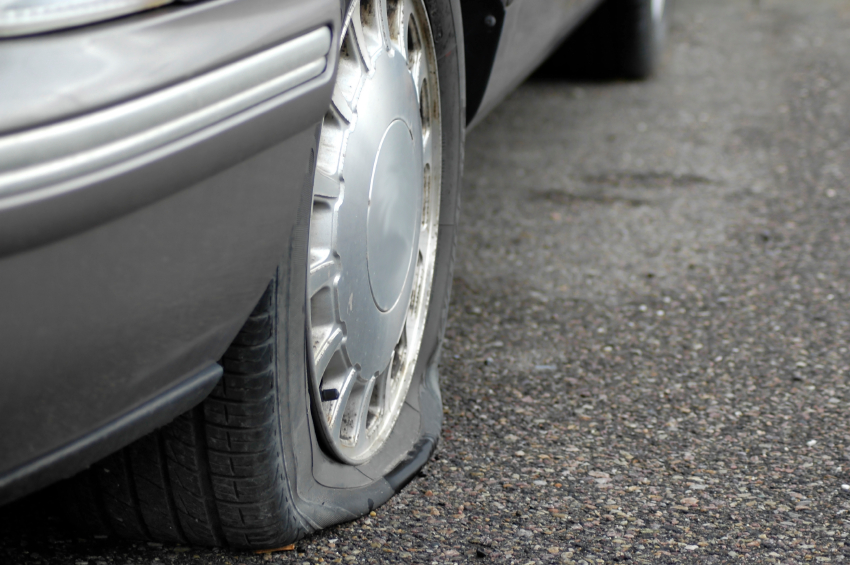 After the vulcanizer is put on the tire, it heats the rubber and solder it.
After the vulcanizer is put on the tire, it heats the rubber and solder it.
In addition to the plaster, the puncture is also repaired with special cord fungi. Masters process the puncture site: drill it and process the surface with a tool to roughen it. Then the repair area is lubricated with glue (it is also called cement) and a fungus is introduced. This is done from the inside of the tire. The cap of the fungus is rolled, and the excess legs are simply cut off from the outside.
Repairing a puncture with sealant
With the advent of tubeless wheels and later run flat tires, many automakers began to forego spare wheels. Instead, repair kits with compressors are supplied with the machines. A repair kit is essentially a bottle of pressurized sealant. Later, such spray cans began to appear on the shelves of ordinary car dealerships.
This method has not taken root in the CIS, because the condition of the roads forces you to have at least a stowaway in the kit, but you can also consider it as a way to repair on the road.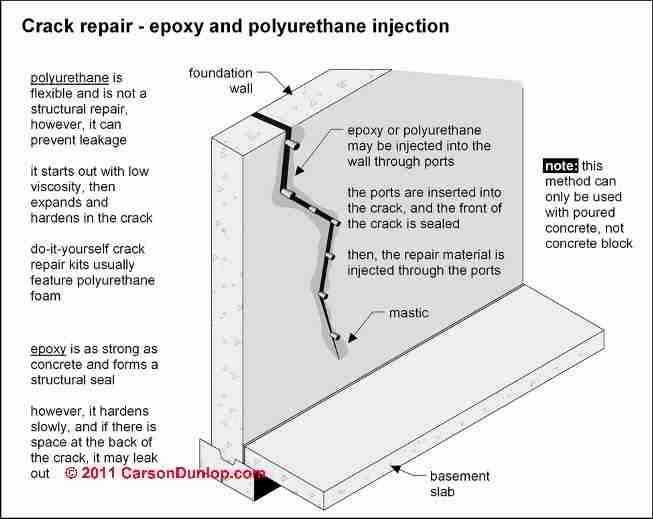
The car must be jacked up and sealant must be pumped into the damaged wheel through the nipple. Next, you should spin the wheel, then pump it up, lower the car and drive a few hundred meters. If the tire tightness is not restored, repeat the procedure.
For commercial vehicles, cutting the tread with a special device (regrower) is a common thing. Moreover, such tire retreading is provided by the factory (marked REGROOVABLE on the sidewall) to increase the service life. But there are entrepreneurs who undertake to deepen the grooves in tires for passenger cars. But they are not intended for such an operation. Often, used tires for sale are “refreshed” in this way. Be careful!
What is the threat?
The worst option is that the retreaded tire will shoot out on the road, because when deepening the grooves, the master can damage the undertread layer. Such a tire at some point will not be able to hold pressure.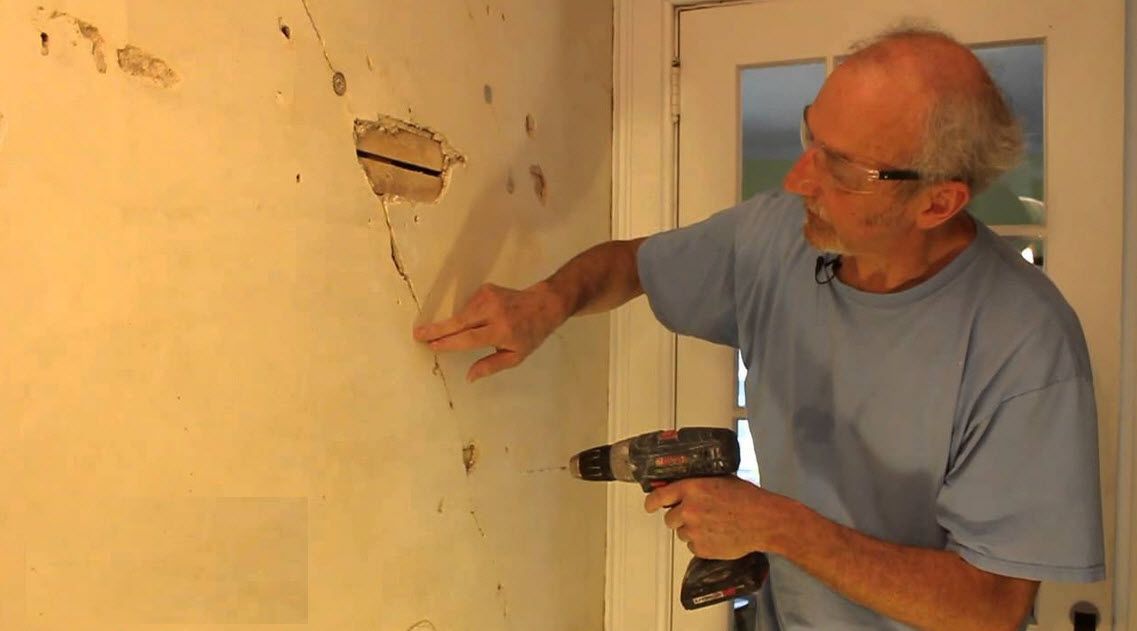 There will be a boom! At best, the tire will indeed last a little longer, but is the game worth the candle? We think it's not worth it.
There will be a boom! At best, the tire will indeed last a little longer, but is the game worth the candle? We think it's not worth it.
How is cutting done?
A regrower is used to cut the tread. Roughly speaking, this is a large soldering iron with interchangeable tips of various shapes. It goes through rubber like a knife through butter.
If the tire is for passenger cars, then it is worth taking on the regrower only in one case - when part of the tread pattern was welded with "new" rubber during the repair. This is where cutting comes in handy in order to restore the grooves and symmetry of the tread.
Vehicle operation is prohibited if:
— tires have a residual tread height of less than 1.6 mm;
- tires have punctures, cuts, ruptures that expose the cord, as well as delamination of the carcass, delamination of the tread and sidewall;
- tires in size or load capacity do not match the car model;
- tires of various sizes, designs (radial, diagonal, chamber, tubeless), models, with different tread patterns, winter and summer, studded and non-studded, new and restored, are installed on one axle of the car;
— Tires retreaded according to the second repair class are installed on the front axle.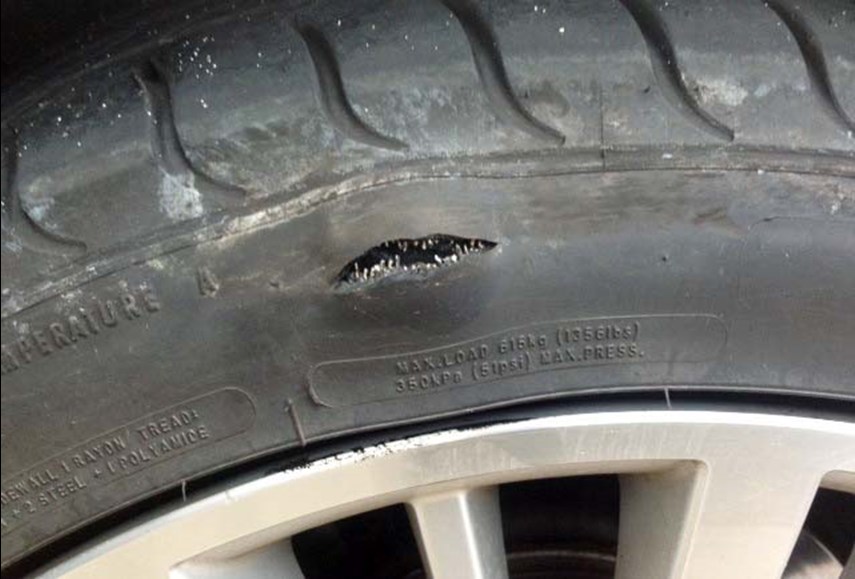
What is the second class of repair?
This is the case when the carcass of the tire is restored after serious damage. A side cut (or tear) is a serious damage to the tire carcass.
Seasonal tire change is a crucial stage. Many people know that riding a winter kit in summer can only annoy. Meanwhile, there are good reasons why it is better to extend the operation of winter shoes, even despite the warm weather overboard. Cracks on the sidewalls of tires stand apart among them. Is cracked rubber allowed to continue to be used and how to deal with cracks in general - says Willi Stutzer.
Table of Contents
Replacing a visually new tire can cause nothing but surprise. We are much more accustomed to hearing the phrase “replaced tires because of a bare tread” than to reckon with the opinion of a motorist who cares about the safety of the vehicle and changes tires over the years. Fortunately, we are gradually moving away from such a culture of service and, it must be admitted, we are doing it successfully.
Fortunately, we are gradually moving away from such a culture of service and, it must be admitted, we are doing it successfully.
As for cracks, they occur in all tires without exception. This usually happens over the years, after 5-6 years of normal operation in the case of using high-quality rubber from a famous brand. Regardless of whether they are small or large, further operation of such a tire is prohibited.
It is worth mentioning the craftsmen who adapt such tires for further use. From small cracks in a tubeless tire, they are insured by installing cameras, and large ones are welded. There is no question of any safety of the resulting semi-finished product. Be prepared for the fact that the tire may explode or crumble at any time. If you have already taken this step, then put the repaired product only on the rear axle and replace it as soon as possible.
The period of appearance of cracks, read aging, largely determines the quality of the raw materials from which the tire is cast.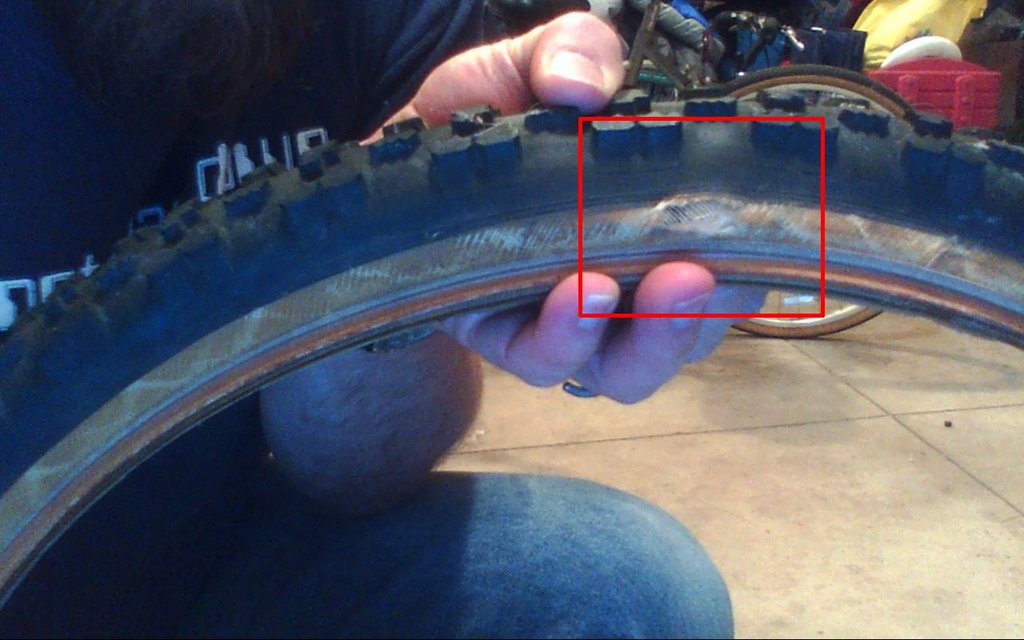 An example of a "long-term" service is demonstrated by KAMA and Rosava products. Even if you drive carefully and do not grab a single bump, this rubber still needs to be replaced after two seasons of normal use. And the reason for this is far from being a protector. The point is these very cracks, which during daily operation appear from exposure to ultraviolet radiation.
An example of a "long-term" service is demonstrated by KAMA and Rosava products. Even if you drive carefully and do not grab a single bump, this rubber still needs to be replaced after two seasons of normal use. And the reason for this is far from being a protector. The point is these very cracks, which during daily operation appear from exposure to ultraviolet radiation.
By the way, ultraviolet finishes even a high-quality tire. But this happens closer to the sixth year of operation, the moral limit, upon reaching which it is recommended to change tires without regard to mileage. Not the last place behind the temperature range: winter tires fail faster in summer and vice versa. However, hot asphalt on hot days contributes to the aging of even the summer set.
Those who like to blacken tires at home deserve special attention (alternative ways). Everyone's favorite glycerin, although it gives a deep black sheen, pretty much dries the rubber, which accelerates the formation of cracks.
Another cause of cracking is improper storage of rubber. Information on the correct location of tires in storage, which is actively distributed on social networks during the season of changing shoes, must be taken into account. The temperature regime in the storage is also important here. Remember, following the elementary rules of storage, the risk of cracks and delamination of the cord during the working period of operation is minimized.
Perhaps it is also worth mentioning the miscalculations of the tire fitter, as a result of which the tire stretches excessively and cracks appear. And the point here is precisely that tire fitting provides a poor-quality service, dumping against the background of competitors. As they say, the miser pays twice...
Any crackle on the sidewall of the tire can let air through. By the way, frequent tire inflation is a signal that they should be inspected in detail. It is possible that there are no cracks at all, and the air escapes through a puncture or an old cracked nipple.
It is possible that there are no cracks at all, and the air escapes through a puncture or an old cracked nipple.
As for large cracks, they expose the metal cord. And this means that the metal will be constantly exposed to moisture, and in winter, reagents will also be added to everything else. It is quite clear that such a contact will quickly render the cord unusable, and the strength properties of the tire will deteriorate like an avalanche. And in the end, the frame will collapse with all the sad consequences.
So, the cracks in the frame are not repairable. The verdict is unequivocal - replace it with a new kit, period. It is also worth writing down cuts, breakdowns, hernias and the consequences of poor-quality tire fitting in the form of damage to the bead ring. The first three damages inevitably harm the cord, and it is impossible to predict the resource of a weakened tire, even if it is reinforced with all kinds of reinforced patches.
A damaged bead ring does not allow the tire to sit clearly on the rim, which causes it to “write” eights and cause transverse vibration. The harm from such a violation of geometry is difficult to underestimate - the rapid wear of the steering rack and tips, wheel bearings. I would fix it, but I can't.
Only one type of damage falls under the definition of harmless - a puncture, but only if it is noticed and repaired in a timely manner. This is us about the fact that it is strictly forbidden to move on a flat tire - the cord breaks, and the rubber exfoliates, which makes the product unusable.
Regarding the puncture, it is worth noting that it can be of two types: with cord damage and without it. The first one is distinguished by the fact that after removal, the edges of the puncture do not converge, while the second one does converge. Of course, a puncture with carcass damage does not add health to the tire, but with proper elimination, the tire is not in danger.